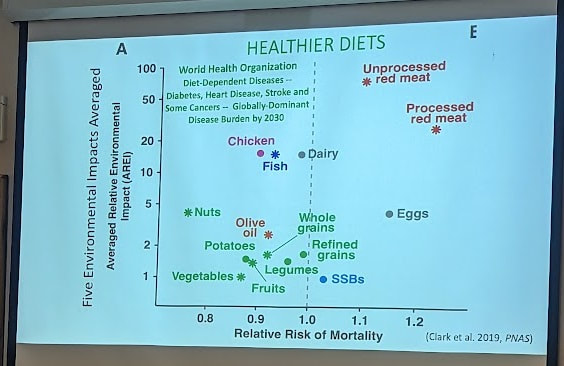|
Long-term research at Cedar Creek Ecosystem Science Reserve has shown that test plots with more diversity (more species of plants) are more productive and resilient. The more species of plants in an area, the greater biomass that plot produced and the more resistant the plant communities are to drought and other stress. This research shows the way for us to make changes in our agricultural systems - increasing diversity in our row crops can help to increase crop yields while reducing the need for fertilizers. Cedar Creek Ecosystem Science Reserve is a large biological research site in east-central Minnesota with natural habitats that represent the entire state. Cedar Creek sits at the meeting point of three major biomes: the tallgrass prairie, coniferous forest, and deciduous forest. As a result, the reserve is considered a site of Outstanding Biodiversity Significance by the MN Biological Survey. Prescribed fire, invasive species control, and rigorous monitoring, are used to maintain and restore in collaboration with local and regional partners. Cedar Creek is owned and operated by the University of Minnesota in cooperation with the Minnesota Academy of Science..
What kind of change? Using the results of the research at Cedar Creek, Dr. Tilman showed that increasing the diversity of plant communities in farm fields would increase yields. He talked about research into new farm practices in China that have shown that adding just one additional crop inter-stripped into a field in five-foot rows greatly increased total yields of both crops. Adding cover crops that create the diversity to the mix you find in nature – grasses, legumes and flowering plants – will rebuild healthy soil. This will mean storing more carbon, requiring less fertilizer for crops and increasing yields so more land does not have to be cleared.  Dr. Elizabeth Borer (photo U of MN) Dr. Elizabeth Borer (photo U of MN) In her talk on September 22, Dr. Elizabeth Borer described her work with a global research cooperative of hundreds of researchers at more than 160 sites who study grasslands around the world. This network spans 28 countries on six continents, providing a global context for the work at Cedar Creek. The researchers in this network share data on the changes they are seeing as nutrient pollution through rain and water pollution causes changes in native grasslands across the globe. Native plants in an area evolved to suit the nutrient signature where they were growing; added nitrogen is causing a loss of native plants and more insect herbivory, and leaves plants more susceptible to disease. The slide below shows the increasing nitrogen in rainfall since 1860. This nitrogen comes from emissions of ammonia and nitrous oxides, and is expected to increase in years to come.
When we are told alarming news like this, we may feel discouraged, and don’t feel that there’s anything we can do. But there are things we can do. We can advocate for increased funding in the Farm Bill to help farmers change farming practices, and we can eat foods like vegetables, fruits, whole grains, and nuts while reducing our consumption of red meat and dairy products. The diagram below shows the environmental impact of a food's production on the left axis and the relative risk of mortality from eating a daily serving of that food along the bottom axis.
Comments are closed.
|
| LWV Upper Mississippi River Region | UMRR blog |




 RSS Feed
RSS Feed